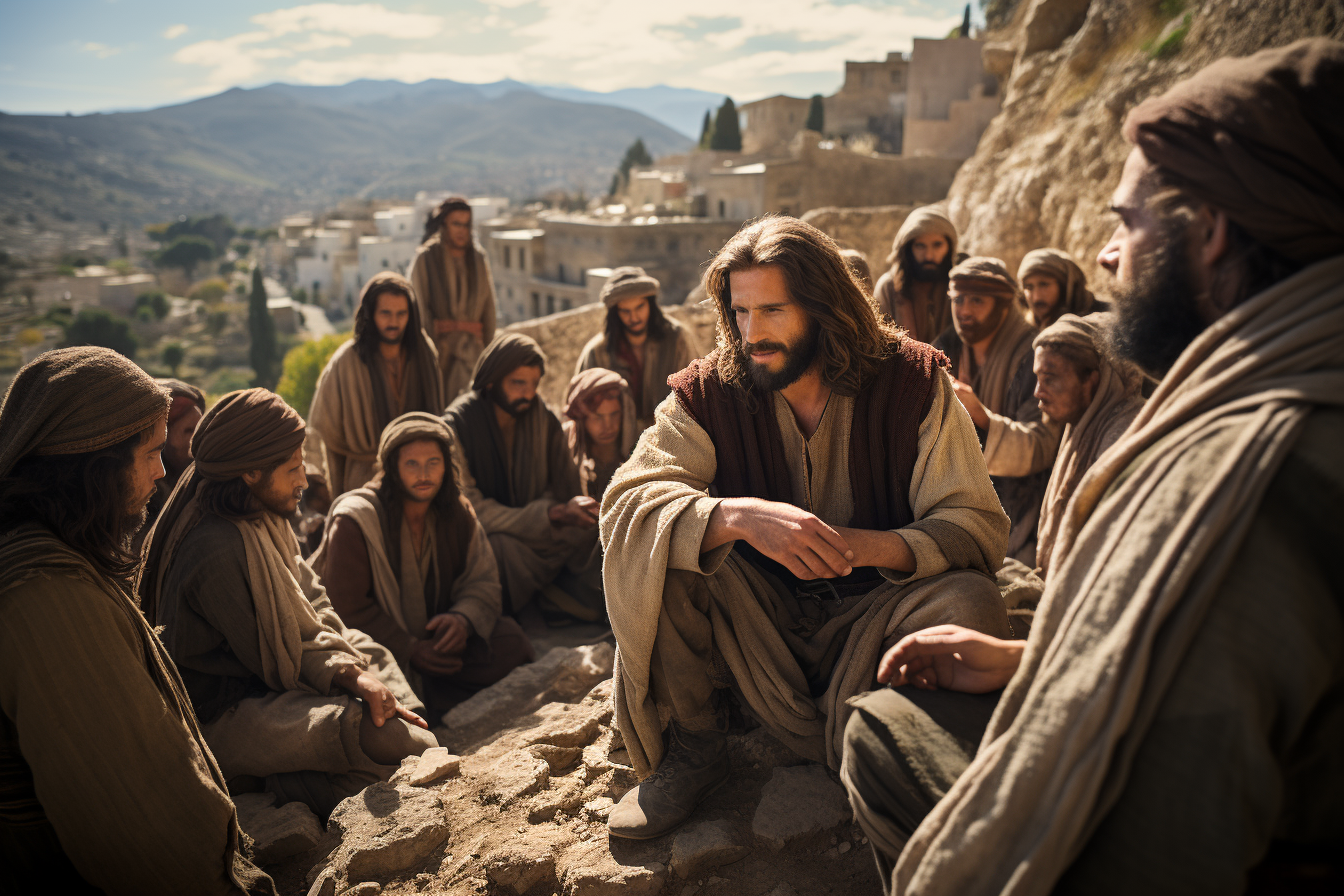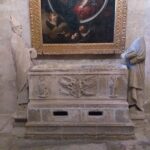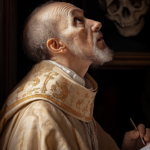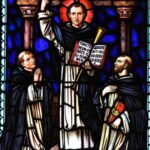
St. John the Apostle
St. John the Apostle
St. John the Apostle
When they lived: St. John the Apostle, also known as John the Evangelist, lived during the 1st century AD.
Where they lived: St. John the Apostle lived in various locations throughout his life, primarily in the region of the eastern Mediterranean, including places like Galilee and Ephesus.
Notable world events during the time of their life:
- The Destruction of the Second Temple (70 AD): One of the most significant events during John’s life was the destruction of the Second Temple in Jerusalem by the Roman Empire. This event reshaped the religious landscape of Judaism and had far-reaching consequences for the Jewish community.
- The Great Fire of Rome (64 AD): In 64 AD, a devastating fire broke out in Rome, causing widespread destruction. Emperor Nero was accused of playing the lyre while the city burned. This event led to the persecution of Christians, and some accounts suggest that John may have faced hardship during this time.
- The Life of Jesus Christ: St. John was one of the twelve apostles of Jesus Christ and witnessed several pivotal moments in his life, including the Transfiguration, the Last Supper, the Crucifixion, and the Resurrection. His gospel writings offer unique insights into these events and the teachings of Jesus.
- The Pax Romana: During John’s life, the Roman Empire experienced a period of relative peace and stability known as the Pax Romana. This time allowed for cultural exchange, trade, and the spread of ideas across various regions.
- Emergence of Roman Colosseum (80 AD): Although the construction of the Roman Colosseum was completed after John’s death, its construction began during his lifetime. The Colosseum became an iconic symbol of Roman engineering and entertainment, hosting various events, including gladiator fights and public spectacles.
Their patronage: St. John the Apostle is considered the patron saint of various groups and causes, including theologians, writers, publishers, and those struggling with burns or poisonings. He is also regarded as a patron for protection against various spiritual and physical dangers.
Small Details of His Life
Jesus chose the Twelve Apostles as his companions and friends on the journey. This journey was not only a literal and physical journey from place to place. It was also a journey during which they learned who Jesus was, grew in their faith, and were prepared for the great mission ahead. They serve as our guides to help us know the Lord Jesus—to know Him, to love Him, and to have faith in Him.
There are no records of the early life of St. John the Apostle. The Gospels, however, provide us with important details about his life. John was the son of Zebedee and the brother of James the Greater. They were mending their nets on the shore of Lake Tiberias when Jesus came and called him and his brother (see Matthew 4:21 and Mark 1:19). His name appears in the lists of the apostles found in the Gospels. According to tradition, John is the “disciple whom Jesus loved” in the Fourth Gospel, which is attributed to him.
Belonging to Jesus’ Circle of Friends
John belonged to what is called the “Apostolic College”. He was always among the small group, comprising him, Peter, and James, which Jesus took with Him on specific occasions. He was present when Jesus entered Peter’s house in Capernaum and cured his mother-in-law (see Mark 1:29), when Jesus went to the house of the synagogue leader Jairus, whose daughter He brought back to life (see Mark 5:37), and he followed Him when Jesus went up to the mountain for His Transfiguration (see Mark 9:2). Hence, John belonged to the circle of Jesus’ closest companions.
John was beside Jesus on the Mount of Olives when Jesus spoke of the end of the city and of the world (see Mark 13:3). He was close to Jesus in the Garden of Gethsemane when He prayed to the Father before His Passion (see Mark 13:33). Shortly before the Passover, Jesus sent him and Peter to prepare the room for the Last Supper (see Luke 22:8). John was the only apostle, together with Mary, who stood at the foot of Jesus’ cross on Golgotha (see John 19:26). Lastly, he witnessed both the empty tomb and the presence of the Risen Christ Himself (see John 20:2; 21:7).
John’s prominent position in the group makes it somewhat easier to comprehend the initiative taken by his mother one day. She approached Jesus and asked Him if her two sons, John and James, could sit one on His left and the other on His right in the kingdom (see Matthew 20:20–21). Jesus, in turn, asked whether they were ready to drink the cup He was about to drink, to which they responded affirmatively. Jesus, however, explained to them that He had come to serve and not to be served and that anyone who wishes to be the greatest among them should serve.
John after the Resurrection
Days after Jesus’ Resurrection, we could find “the sons of Zebedee” together with Peter and some other disciples on a night when they had nothing for a catch. After the intervention of a man walking along the shore, they had a miraculous catch, and the first to recognize the man was “the disciple whom Jesus loved”, telling Peter, “It is the Lord!” (John 21:7).
In the Church of Jerusalem, John served as the supervisor of the first group of Christians. Paul listed him among those whom he called “pillars” of the community. In the Acts of the Apostles, he was with Peter when they went to the Temple and prayed (see Acts 3:1–4, 11) and appeared before the Sanhedrin to witness to their faith in the Lord Jesus (see Acts 4:13–19). He, together with Peter, was sent to Jerusalem to strengthen the people in Samaria who had accepted the faith and pray for them that they might receive the Holy Spirit (see Acts 8:14–15).
Aside from his version of the gospel, John also wrote three epistles and was believed to be the author of the Book of Revelation. Tradition and stories say that during a persecution, John was arrested and sentenced to death. He was thrown into a pot of boiling oil, but he was left unharmed, without even a single mark on his skin. The emperor then exiled him to an island called Patmos, where he lived to a very old age and died around the year 100. His feast day is on December 27.
Five Interesting Facts About St. John the Apostle
- St. John the Apostle was the only apostle who did not die a martyr’s death. It is traditionally believed that he was also the youngest of the apostles and outlived them.
- Tradition says that since St. John the Apostle lived in Ephesus after the Resurrection, the Blessed Mother lived with him, and her Assumption took place there as well.
- In Christian art, the Gospel according to John is depicted by an eagle, symbolizing “the height he rose to in his Gospel.”
- St. John the Apostle is the patron saint of love, loyalty, friendships, and authors.
- The Gospel according to John uses the most metaphors for Jesus, particularly the “I am” sayings of Jesus.
Prayer to St. John the Apostle
O God, who through the blessed Apostle John has unlocked for us the secrets of your Word, grant, we pray, that we may grasp with proper understanding what he has so marvelously brought to our ears. Through our Lord Jesus Christ, your Son, who lives and reigns with you in the unity of the Holy Spirit, one God, for ever and ever Amen.



